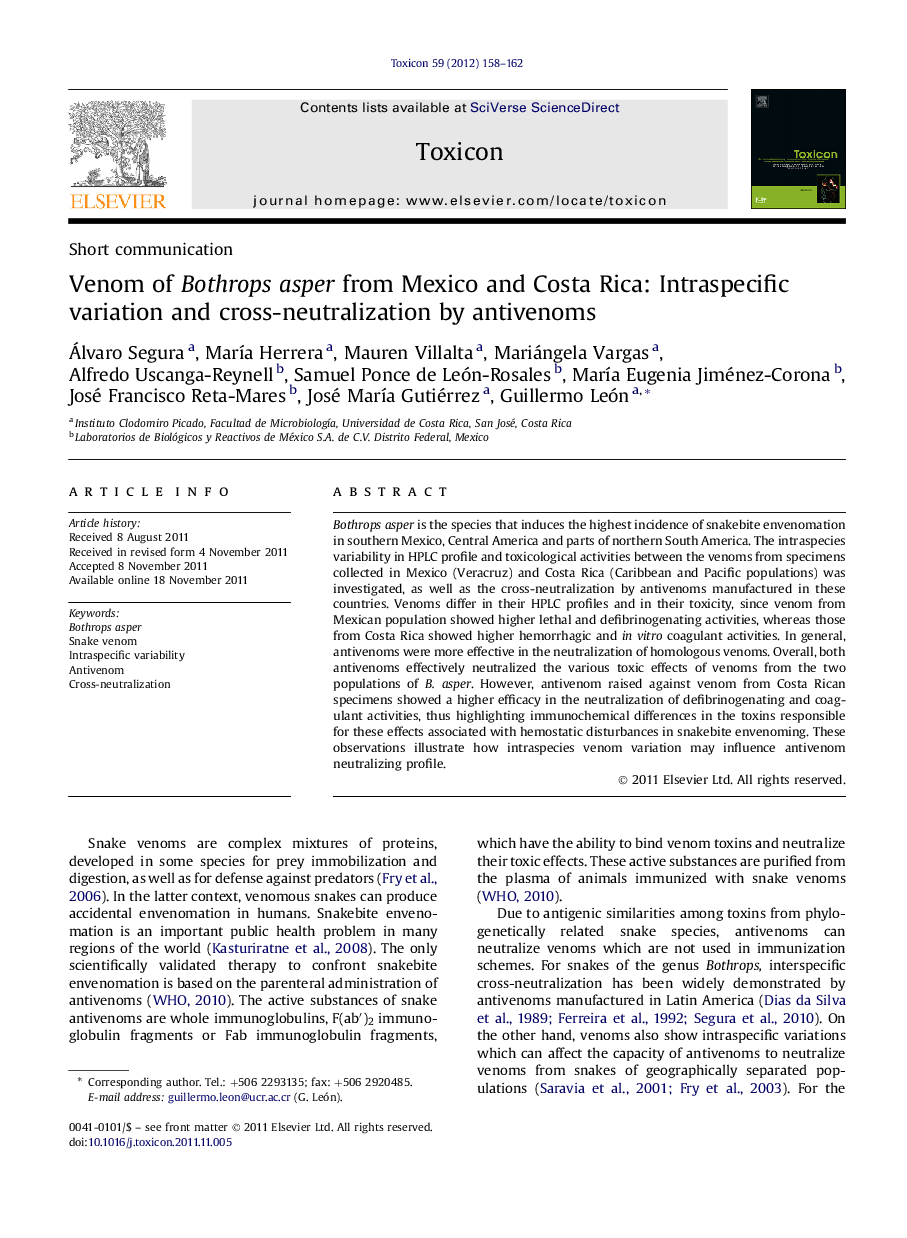| Article ID | Journal | Published Year | Pages | File Type |
|---|---|---|---|---|
| 10880225 | Toxicon | 2012 | 5 Pages |
Abstract
Bothrops asper is the species that induces the highest incidence of snakebite envenomation in southern Mexico, Central America and parts of northern South America. The intraspecies variability in HPLC profile and toxicological activities between the venoms from specimens collected in Mexico (Veracruz) and Costa Rica (Caribbean and Pacific populations) was investigated, as well as the cross-neutralization by antivenoms manufactured in these countries. Venoms differ in their HPLC profiles and in their toxicity, since venom from Mexican population showed higher lethal and defibrinogenating activities, whereas those from Costa Rica showed higher hemorrhagic and in vitro coagulant activities. In general, antivenoms were more effective in the neutralization of homologous venoms. Overall, both antivenoms effectively neutralized the various toxic effects of venoms from the two populations of B. asper. However, antivenom raised against venom from Costa Rican specimens showed a higher efficacy in the neutralization of defibrinogenating and coagulant activities, thus highlighting immunochemical differences in the toxins responsible for these effects associated with hemostatic disturbances in snakebite envenoming. These observations illustrate how intraspecies venom variation may influence antivenom neutralizing profile.
Related Topics
Life Sciences
Biochemistry, Genetics and Molecular Biology
Biochemistry, Genetics and Molecular Biology (General)
Authors
Álvaro Segura, MarÃa Herrera, Mauren Villalta, Mariángela Vargas, Alfredo Uscanga-Reynell, Samuel Ponce de León-Rosales, MarÃa Eugenia Jiménez-Corona, José Francisco Reta-Mares, José MarÃa Gutiérrez, Guillermo León,
